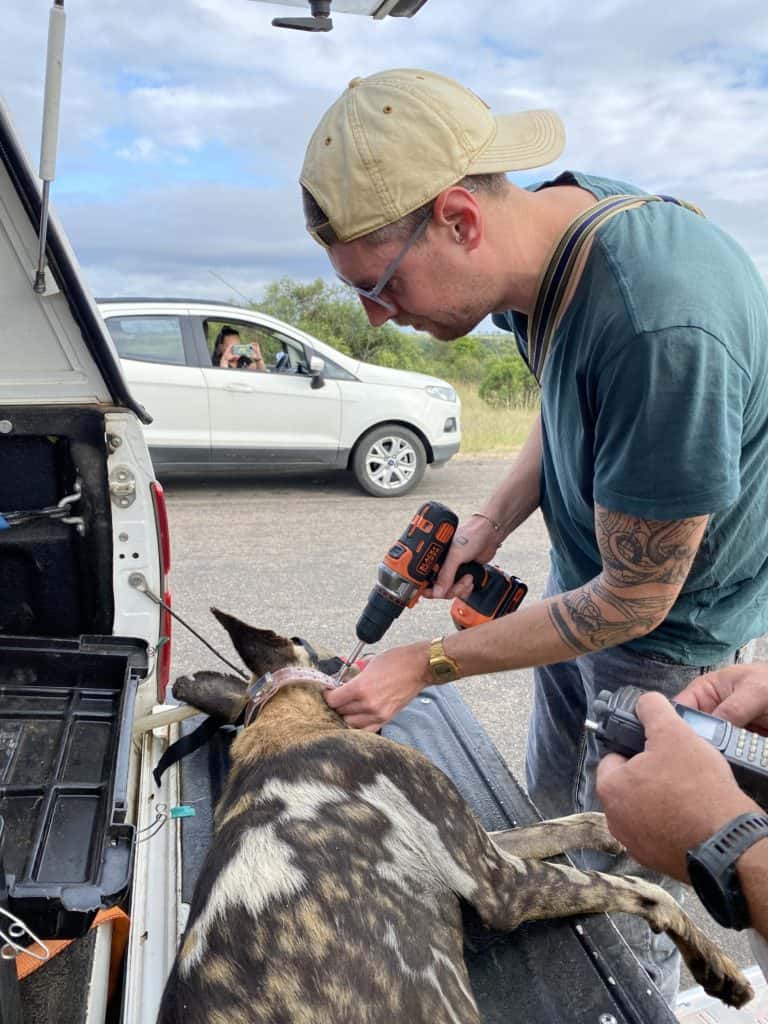Share this article
Wifi-equipped animals can improve field monitoring
Krueger National Park in South Africa is home to only about 200 African wild dogs—one of the most endangered canids in the world. But despite their small population size, conservationists have trouble monitoring such wide-ranging animals that face a number of threats. Sometimes, wild dogs (Lycaon pictus) get caught in illegal snares set out for other species. They might even starve while stuck in the traps, before researchers realize there’s an issue.
But thanks to chips placed on the animals that connect to surrounding Wi-Fi networks or phones, researchers are getting a better idea of where these dogs are and what they’re doing to help curtail these types of issues.
In a study published recently in Methods in Ecology and Evolution., Timm Wild, a PhD candidate with the Max Planck Institute of Animal Behavior and the university of ETH Zurich, and his colleagues described how the new Wi-Fi technology uses the internet to transmit live information like acceleration, audio recordings or information from various sensors to scientists on the other end of the planet.

A WildFi chip is about the size of an SD card, or as seen here, a one euro coin. Credit: Timm Alexander Wild
He first came up with the idea while experimenting with ESP32 chips, low cost, low power devices that automatically connect to open Wi-Fi networks and relay information to a database. After driving through Morocco with one of these devices on his car, Wild reconstructed his route using the data collected from the chip as the chip connected to Wi-Fi networks.
“The idea evolved, and I was thinking: What would be the benefit of putting a Wi-Fi chip on animals?” he said, adding that it could solve the problem of transmitting large amounts of short-range, data.
These chips, which he and his colleagues call “WildFi” tags, are about the size of an SD card, and can work in concert with accelerometers, sound recording equipment or cameras, to transmit all kinds of information back to researchers. The devices can be powered by a small solar cell and a small battery, and can be programmed to connect to certain Wi-Fi networks where the password is known, or to automatically connect to any open network that doesn’t require a password. When the chip connects, the device beams the information it integrates from the accompanying camera, barometer, sound recorder, accelerometer or other sensor to a database.
This especially works in situations in which the animals often come close to human-populated areas with internet connection.
Wild and his colleagues tested the technology with African wild dogs. The researchers first had to capture the animals and fit them will collars equipped with chips. In the past, when using other technology like GPS collars, researchers often had to recapture the same animal to get some of the fine-scale data. But this technology sends information to researchers in real time, and also holds a decent amount of memory.

Timm Wild places a collar fitted with a WildFi chip on an African wild dog in Kruger National Park.
Credit: Martin Wikelski
The scientists are now learning more about how wild dogs travel throughout Krueger. And when the accelerometers they use show the animal changes its usual acceleration patterns, they can check if it has been snared and free it. If the animal has been killed, they can use the device together with other technology to locate it, driving out and determine the cause of death before scavengers get to it. Since the population of wild dogs is less than 200 in Krueger, the life of each individual is important for conservation, Wild said. In addition, he said, such fine-scale information on movement has never been gathered on wild dogs due to practical limitations of downloading big data.
He added the technology can also be used to gather information on disease transmission. For example, wild dog populations have been ravaged in Africa by canine distemper. If the accelerometers begin to show individuals slowing down more than usual, biologists can infer they may be sick and work to capture the animals for treatment. Removing the animal could slow the spread of the disease in the population as well.
Wild and his colleagues have also been using these chips in another species like wild boars (Sus scrofa), pangolins, cockatiels (Nymphicus hollandicus) and others. They have been tracking wild boar since late 2021 to learn more about the spread of African swine fever.
While the technology can be set up to connect to Wi-Fi networks, stationary modems can also be set out in the field in some cases to capture the data from passing animals fitted with these chips, he said. These modems could also be accompanied with trail cameras to gather even more information about the conditions of passing animals—the cameras become activated by the Wi-Fi signal of passing animals, and can allow researchers to distinguish individuals. Or they could be programmed to connect with the phones of wildlife professionals working in the field, whenever they are within range—Wild and his colleagues have already developed an app that helps with this.
Header Image: An African wild dog with a “WildFi” chip attached to a collar. Credit: Louis van Schalkwyk








